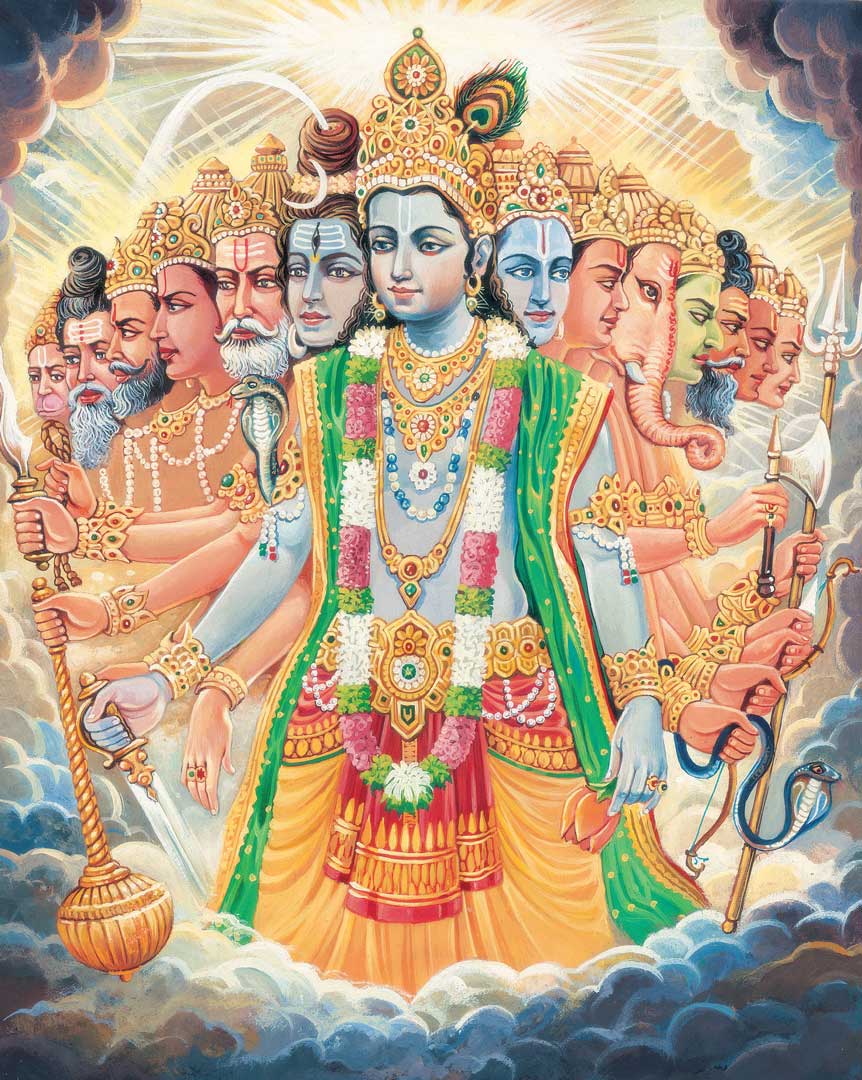

श्रीभगवानुवाच |
पश्य मे पार्थ रूपाणि शतशोऽथ सहस्रश: |
नानाविधानि दिव्यानि नानावर्णाकृतीनि च || 5||
śhrī-bhagavān uvācha
paśhya me pārtha rūpāṇi śhataśho ’tha sahasraśhaḥ
nānā-vidhāni divyāni nānā-varṇākṛitīni cha
shri-bhagavan uvacha
pashya me partha rupani shatasho ’tha sahasrashah
nana-vidhani divyani nana-varnakritini cha
BG 11.5: The Supreme Lord said: Behold, O Parth, My hundreds and thousands of wonderful forms of various shapes, sizes, and colors.

Start your day with a nugget of timeless inspiring wisdom from the Holy Bhagavad Gita delivered straight to your email!
After listening to Arjun’s prayers, Shree Krishna now asks him to have a vision of his viśhwarūp, or universal form. He uses the word paśhya, meaning “behold” to indicate that Arjun must pay attention. Although the form is one, it has unlimited features, and contains innumerable personalities of multitude shapes and variegated colors. Shree Krishna uses the phrase śhataśho ’tha sahasraśhaḥ to indicate they exist in innumerable fashions and multitude ways.
Having asked Arjun to behold his universal form with infinite shapes and colors, Shree Krishna now asks Arjun to observe the celestial gods and other wonders in that cosmic form.